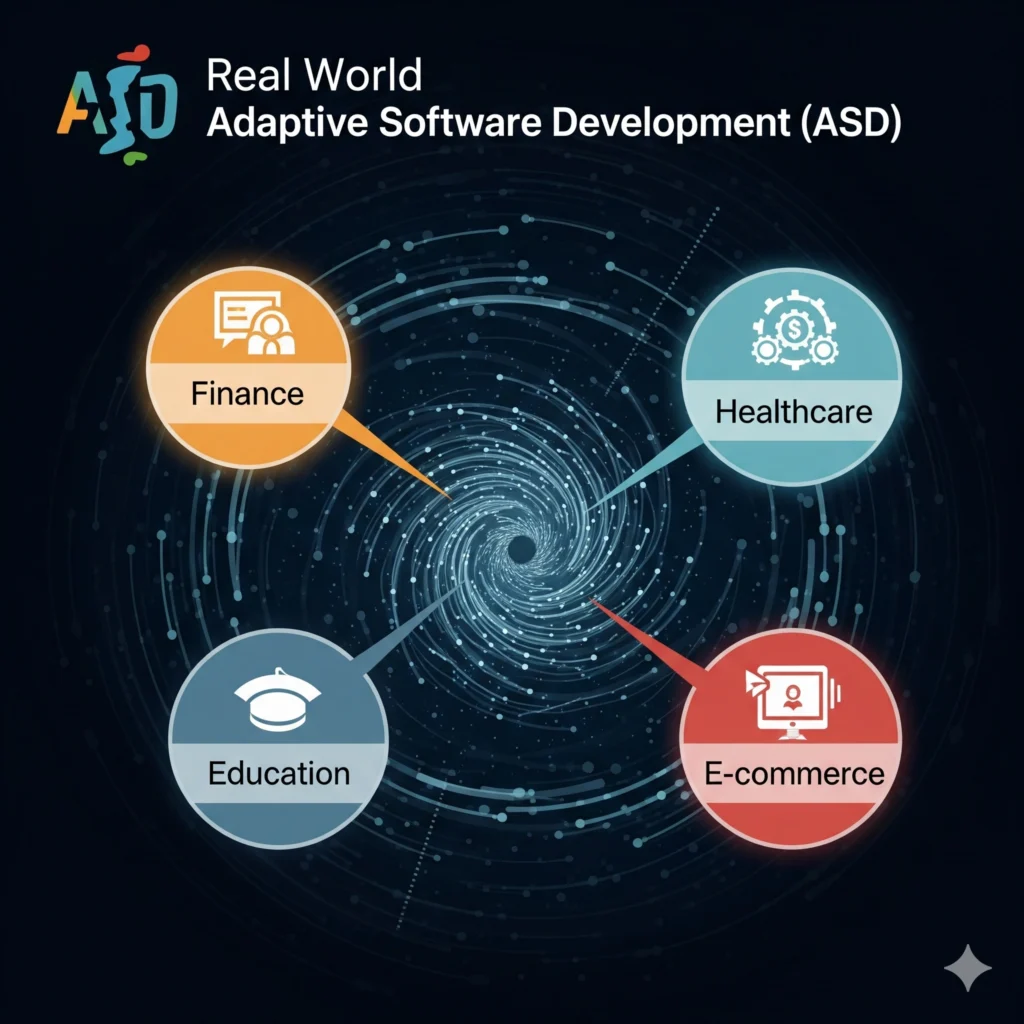Adaptive Software Development: A Modern Guide to Building Flexible Software
In today’s tech-driven world, one thing is certain—change never stops. Customer expectations shift, markets evolve, and requirements rarely stay the same from start to finish. Traditional “set-in-stone” software development methods often struggle to keep up. That’s where Adaptive Software Development (ASD) comes in.
Instead of fighting change, ASD embraces it. It’s not about rigid plans—it’s about learning, adjusting, and delivering value step by step. Think of it as a flexible roadmap where feedback shapes the journey.
What Exactly Is Adaptive Software Development?
Originally introduced in the 1990s by Jim Highsmith and Sam Bayer, ASD was designed as a more flexible alternative to the old Waterfall model. Rather than locking teams into strict timelines and requirements, ASD builds on three key phases:
- Speculate – Set goals and assumptions, but expect them to evolve.
- Collaborate – Bring developers, testers, designers, and customers together to create solutions.
- Learn – Reflect on what worked, what didn’t, and improve in the next cycle.
In short, ASD is about building software in a way that accepts uncertainty and turns it into progress.
Why Does ASD Matter Today?
Business moves fast. Customers want updates yesterday, and competition is only a click away. ASD stands out because it:
- Adapts quickly to shifting requirements
- Puts customer feedback at the center
- Speeds up delivery with shorter cycles
- Reduces risk by catching issues early
- Scales from small teams to enterprise projects
It’s not just a methodology—it’s a survival strategy in fast-changing industries.
The Process: How ASD Works in Practice
Unlike step-by-step models, ASD is cyclical. Each loop produces a working version of the software, ready for review and feedback.
- Speculate: Create flexible plans and adjust as new insights appear.
- Collaborate: Cross-functional teams and customers work closely in short iterations.
- Learn: Review results, gather lessons, and apply them immediately.
This cycle repeats, ensuring every version is smarter than the last.
The Benefits of Adaptive Software Development
Why are more organizations turning to ASD? A few standout reasons:
- Welcomes change instead of resisting it
- Improves communication across teams and stakeholders
- Delivers usable features faster
- Cuts waste by dropping what doesn’t work
- Drives innovation through constant learning
Challenges You Should Know
Of course, ASD isn’t a magic fix. It works best when:
- Teams are skilled and collaborative
- Customers can stay actively involved
- Companies are open to flexible timelines (not rigid contracts)
For organizations willing to embrace these realities, the payoff is significant.
How ASD Compares to Other Approaches
- Waterfall: Linear, rigid, hard to adapt once started.
- Agile: Structured frameworks (like Scrum) guide the process.
- ASD: Less about frameworks, more about adaptability, learning, and collaboration.
Real-World Uses of ASD

Many industries have found ASD invaluable:
- Healthcare – meeting ever-changing compliance rules
- Finance – creating secure but adaptable systems
- Education – refining learning platforms through feedback
- E-commerce – reacting quickly to shifting consumer demands
Looking Ahead: The Future of ASD
As technology becomes more complex and unpredictable, ASD is likely to become even more relevant. With AI and predictive tools entering the mix, the “Speculate” phase may become smarter, helping teams plan better while staying flexible.
Conclusion
So, what is Adaptive Software Development? Simply put, it’s a flexible, iterative way of building software that thrives on change instead of fearing it. By focusing on speculation, collaboration, and learning, ASD helps teams move faster, deliver better, and keep customers at the center of the journey.
If your projects live in an uncertain environment (and let’s be honest—most do), ASD may be exactly what you need
FAQS
Q1. What is Adaptive Software Development (ASD)?
Adaptive Software Development (ASD) is a flexible, iterative software methodology that embraces change. It focuses on three phases: Speculate, Collaborate, and Learn.
Q2. Who created Adaptive Software Development?
ASD was introduced in the 1990s by Jim Highsmith and Sam Bayer as an alternative to the rigid Waterfall model.
Q3. How does ASD differ from traditional methods like Waterfall?
Unlike Waterfall, which is linear and rigid, ASD is cyclical and adaptive. It adjusts plans based on feedback, delivering value step by step.
Q4. What are the three main phases of ASD?
The three phases are Speculate (flexible planning), Collaborate (team and customer cooperation), and Learn (reflection and improvement).
Q5. Why is Adaptive Software Development important today?
ASD matters because it helps teams respond quickly to changing requirements, improve communication, and deliver features faster.







